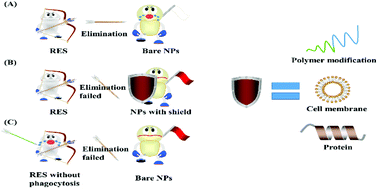Strategies for the design of nanoparticles: starting with long-circulating nanoparticles, from lab to clinic
Abstract
Short half-life is one of the main causes of drug attrition in clinical development, which also leads to the failure of many leading compounds and hits to become drug candidates. Nowadays, nanomaterials have been applied to drug development to address this problem. In fact, the clinical application of nanoparticles (NPs) is severely limited due to their rapid elimination by the reticuloendothelial system (RES) in vivo. In this paper, we aim to summarize representative strategies on prolonging the circulation time for bridging the gap between excellent pharmaceutics and proper half-life and encourage clinical translation.



 Please wait while we load your content...
Please wait while we load your content...